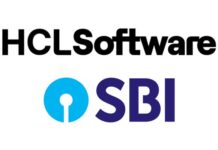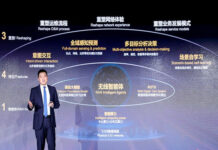- Q1 net revenues $2.23 billion; gross margin 37.9%; operating margin 10.4%; net income $192 million
- Q1 net financial position(1) $668 million
- Business outlook at mid-point: Q2 net revenues $2.0 billion and gross margin of 34.6%
Geneva, April 22, 2020 – STMicroelectronics, reported U.S. GAAP financial results for the first quarter ended March 28, 2020. This press release also contains non-U.S. GAAP measures (see Appendix for additional information).
ST reported first quarter net revenues of $2.23 billion, gross margin of 37.9%, operating margin of 10.4%, and net income of $192 million or $0.21 diluted earnings per share.
Jean-Marc Chery, STMicroelectronics President & CEO, commented:
- “In the first quarter of 2020, net revenues increased 7.5% year-over-year, led by higher sales of our Imaging products and growth in Analog and Microcontrollers, partially offset by lower sales in Automotive, Power Discrete and Digital. Operating margin improved to 10.4% and net income increased 7.9% to $192 million.
- “Our revenues came in about 5% below the mid-point of our outlook when entering the quarter. The COVID-19 outbreak and subsequent containment measures by governments around the world brought challenges in our manufacturing operations and, especially in the last few days of the quarter, logistics. Our Q1 gross margin of 37.9% was largely in line with our mid-point target.
- “We exited the first quarter with a stable net financial position of $668 million, available liquidity of $2.7 billion and available credit facilities of $1.1 billion.
- “Our second quarter outlook is taking into account the declining demand environment, especially in Automotive, as well as the ongoing operational and logistics challenges due to current governmental regulations. We anticipate that all of our manufacturing sites will be operational. Some of them will run at reduced capacity, with unsaturation charges currently estimated to be about 400 basis points.
- “We will drive the Company based on a plan for FY20 revenues between $8.8 billion and $9.5 billion. We plan for growth in the second half over the first half to be in the range of $340 million to $1.04 billion. Growth will be driven by already engaged customer programs and the removal of supply constraints. The growth range is linked to the evolution of the market.
- “We have reduced our CAPEX plan for 2020 from $1.5 billion to a range between $1.0 billion to $1.2 billion.
- “In response to the global COVID-19 pandemic, we will continue to ensure the health and safety of all our employees and to execute our business continuity plans, working with our customers, partners and the communities where we operate.”
Quarterly Financial Summary (U.S. GAAP)
| (US$ m, except per share data) | Q1 2020 | Q4 2019 | Q1 2019 | Q/Q | Y/Y |
| Net Revenues | $2,231 | $2,754 | $2,076 | -19.0% | 7.5% |
| Gross Profit | $846 | $1,081 | $818 | -21.8% | 3.5% |
| Gross Margin | 37.9% | 39.3% | 39.4% | -140 bps | -150 bps |
| Operating Income | $231 | $460 | $211 | -49.8% | 9.4% |
| Operating Margin | 10.4% | 16.7% | 10.2% | -630 bps | 20 bps |
| Net Income | $192 | $392 | $178 | -51.0% | 7.9% |
| Diluted Earnings Per Share | $0.21 | $0.43 | $0.20 | -51.2% | 5.0% |
(1) Non-U.S. GAAP. See Appendix for reconciliation to U.S. GAAP and information explaining why the Company believes these measures are important.
First Quarter 2020 Summary Review
| Net Revenues By Product Group (US$ m) | Q1 2020 | Q4 2019 | Q1 2019 | Q/Q | Y/Y |
| Automotive and Discrete Group (ADG) | 753 | 924 | 903 | -18.4% | -16.6% |
| Analog, MEMS and Sensors Group (AMS) | 852 | 1,085 | 552 | -21.5% | 54.3% |
| Microcontrollers and Digital ICs Group (MDG) | 623 | 742 | 617 | -16.0% | 1.0% |
| Others | 3 | 3 | 4 | – | – |
| Total Net Revenues | 2,231 | 2,754 | 2,076 | -19.0% | 7.5% |
Net revenues totaled $2.23 billion, representing a year-over-year increase of 7.5%. On a year-over-year basis, the Company recorded higher sales of Imaging, Analog and Microcontrollers, partially offset by lower sales in Automotive, Power Discrete and Digital. Year-over-year sales to OEMs increased 22.5% and to Distribution decreased 21.4%. On a sequential basis, net revenues decreased 19.0%, about 5% below the mid-point of our outlook when entering the quarter as the COVID-19 outbreak and subsequent containment measures by governments around the world brought challenges in our manufacturing operations and, especially in the last few days of the quarter, logistics. All product group revenues declined on a sequential basis.
Gross profit totaled $846 million, representing a year-over-year increase of 3.5%. Gross margin of 37.9% decreased 150 basis points year-over-year, mainly impacted by price pressure and unsaturation charges, including COVID-19 workforce related restrictions. First quarter gross margin was 10 basis points lower than the mid-point of the Company’s guidance.
Operating income increased 9.4% to $231 million, compared to $211 million in the year-ago quarter. The Company’s operating margin increased 20 basis points on a year-over-year basis to 10.4% of net revenues, compared to 10.2% in the 2019 first quarter.
By product group, compared with the year-ago quarter:
Automotive and Discrete Group (ADG):
- Revenue decreased in both Automotive and Power Discrete.
- Operating profit decreased by 76.4% to $23 million. Operating margin was 3.0% compared to 10.6%.
Analog, MEMS and Sensors Group (AMS):
- Revenue increased in Imaging and Analog and was substantially flat in MEMS.
- Operating profit increased by 313.1% to $177 million. Operating margin was 20.8% compared to 7.8%.
Microcontrollers and Digital ICs Group (MDG):
- Revenue increased in Microcontrollers and decreased in Digital ICs.
- Operating profit decreased by 13.5% to $71 million. Operating margin was 11.5% compared to 13.4%.
Net income and diluted earnings per share increased to $192 million and $0.21, respectively, compared to $178 million and $0.20, respectively, in the year-ago quarter.
Cash Flow and Balance Sheet Highlights
| Trailing 12 Months | ||||||
| (US$ m) | Q1 2020 | Q4 2019 | Q1 2019 | Q1 2020 | Q1 2019 | TTM Change |
| Net cash from operating activities | 399 | 775 | 341 | 1,927 | 1,730 | 11.4% |
| Free cash flow (non-U.S. GAAP) | 113 | 461 | (67) | 677 | 370 | 83.0% |
Capital expenditure payments, net of proceeds from sales, were $266 million in the first quarter. In the year-ago quarter, capital expenditures, net, were $322 million.
Inventory at the end of the quarter was $1.77 billion, at the same level as the prior year quarter. Day sales of inventory at quarter-end was 116 days compared to 124 days in the prior year quarter.
Free cash flow (non-U.S. GAAP) was positive $113 million in the first quarter, compared to negative $67 million in the year-ago quarter.
In the first quarter, the Company paid cash dividends totaling $53 million and executed a $62 million share buy-back as part of its previously announced share repurchase program.
ST’s net financial position (non-U.S. GAAP) was $668 million at March 28, 2020 compared to $672 million at December 31, 2019 and reflected total liquidity of $2.71 billion and total financial debt of $2.04 billion.
Business Outlook
The Company’s guidance, at the mid-point, for the 2020 second quarter is:
- Net revenues are expected to be $2.0 billion, a decrease of 10.3% sequentially, plus or minus 350 basis points;
- Gross margin of about 34.6%, plus or minus 200 basis points;
- This outlook is based on an assumed effective currency exchange rate of approximately $1.11 = €1.00 for the 2020 second quarter and includes the impact of existing hedging contracts.
- The second quarter will close on June 27, 2020.
The Company has reduced its 2020 CAPEX to between $1.0 billion to $1.2 billion from $1.5 billion.
Recent Corporate Developments
- On April 7, 2020, ST closed the acquisition of a majority stake in French Gallium Nitride (GaN) innovator Exagan. The transaction was funded with available cash.
Conference Call and Webcast Information
STMicroelectronics will conduct a conference call with analysts, investors and reporters to discuss its first quarter 2020 financial results and current business outlook today at 9:30 a.m. Central European Time (CET) / 3:30 a.m. U.S. Eastern Time (ET). A live webcast (listen-only mode) of the conference call will be accessible at ST’s website, http://investors.st.com, and will be available for replay until May 8, 2020.
Use of Supplemental Non-U.S. GAAP Financial Information
This press release contains supplemental non-U.S. GAAP financial information.
Readers are cautioned that these measures are unaudited and not prepared in accordance with U.S. GAAP and should not be considered as a substitute for U.S. GAAP financial measures. In addition, such non-U.S. GAAP financial measures may not be comparable to similarly titled information from other companies.
See the Appendix of this press release for a reconciliation of the Company’s non-U.S. GAAP financial measures to their corresponding U.S. GAAP financial measures. To compensate for these limitations, the supplemental non-U.S. GAAP financial information should not be read in isolation, but only in conjunction with the Company’s consolidated financial statements prepared in accordance with U.S. GAAP.
Forward-looking Information
Some of the statements contained in this release that are not historical facts are statements of future expectations and other forward-looking statements (within the meaning of Section 27A of the Securities Act of 1933 or Section 21E of the Securities Exchange Act of 1934, each as amended) that are based on management’s current views and assumptions, and are conditioned upon and also involve known and unknown risks and uncertainties that could cause actual results, performance, or events to differ materially from those anticipated by such statements, due to, among other factors:
- changes in global trade policies, including the adoption and expansion of tariffs and trade barriers, that could affect the macro-economic environment and adversely impact the demand for our products;
- uncertain macro-economic and industry trends, which may impact end-market demand for our products;
- customer demand that differs from projections;
- the ability to design, manufacture and sell innovative products in a rapidly changing technological environment;
- changes in economic, social, public health, labor, political, or infrastructure conditions in the locations where we, our customers, or our suppliers operate, including as a result of macroeconomic or regional events, military conflicts, social unrest, labor actions, or terrorist activities;
- unanticipated events or circumstances, which may impact our ability to execute our plans and/or meet the objectives of our R&D and manufacturing programs, which benefit from public funding;
- the Brexit vote and the impact of the withdrawal of the U.K. may adversely affect business activity, political stability and economic conditions in the U.K., the Eurozone, the EU and elsewhere. The U.K. withdrawal from the EU took place on January 31, 2020 and the UK majority government is expected to complete Brexit even if no formal withdrawal agreement is in place with the EU by the end of the transition period running until December 31, 2020. The specific terms of the U.K. withdrawal from the EU are still uncertain and while we do not have material operations in the U.K. and have not experienced any material impact from Brexit on our underlying business to date, we cannot predict its future implications;
- financial difficulties with any of our major distributors or significant curtailment of purchases by key customers;
- the loading, product mix, and manufacturing performance of our production facilities and/or our required volume to fulfill capacity reserved with suppliers or third party manufacturing providers;
- availability and costs of equipment, raw materials, utilities, third-party manufacturing services and technology, or other supplies required by our operations;
- the functionalities and performance of our IT systems, which are subject to cybersecurity threats and which support our critical operational activities including manufacturing, finance and sales, and any breaches of our IT systems or those of our customers or suppliers;
- theft, loss, or misuse of personal data about our employees, customers, or other third parties, and breaches of global and local privacy legislation, including the EU’s General Data Protection Regulation (“GDPR”);
- the impact of intellectual property (“IP”) claims by our competitors or other third parties, and our ability to obtain required licenses on reasonable terms and conditions;
- changes in our overall tax position as a result of changes in tax rules, new or revised legislation, the outcome of tax audits or changes in international tax treaties which may impact our results of operations as well as our ability to accurately estimate tax credits, benefits, deductions and provisions and to realize deferred tax assets;
- variations in the foreign exchange markets and, more particularly, the U.S. dollar exchange rate as compared to the Euro and the other major currencies we use for our operations;
- the outcome of ongoing litigation as well as the impact of any new litigation to which we may become a defendant;
- product liability or warranty claims, claims based on epidemic or delivery failure, or other claims relating to our products, or recalls by our customers for products containing our parts;
- natural events such as severe weather, earthquakes, tsunamis, volcano eruptions or other acts of nature, the effects of climate change, health risks and epidemics such as the novel coronavirus COVID-19 in locations where we, our customers or our suppliers operate;
- industry changes resulting from vertical and horizontal consolidation among our suppliers, competitors, and customers; and
- the ability to successfully ramp up new programs that could be impacted by factors beyond our control, including the availability of critical third party components and performance of subcontractors in line with our expectations.
Such forward-looking statements are subject to various risks and uncertainties, which may cause actual results and performance of our business to differ materially and adversely from the forward-looking statements. Certain forward-looking statements can be identified by the use of forward looking terminology, such as “believes,” “expects,” “may,” “are expected to,” “should,” “would be,” “seeks” or “anticipates” or similar expressions or the negative thereof or other variations thereof or comparable terminology, or by discussions of strategy, plans or intentions.
Some of these risk factors are set forth and are discussed in more detail in “Item 3. Key Information — Risk Factors” included in our Annual Report on Form 20-F for the year ended December 31, 2019, as filed with the SEC on February 26, 2020. Should one or more of these risks or uncertainties materialize, or should underlying assumptions prove incorrect, actual results may vary materially from those described in this release as anticipated, believed, or expected. We do not intend, and do not assume any obligation, to update any industry information or forward-looking statements set forth in this release to reflect subsequent events or circumstances.
For more information please vist at www.st.com.















